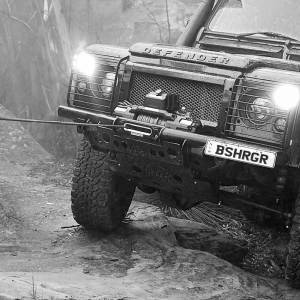Wire or Synthetic Rope
We get asked a lot, which winch is better? Wire or Synthetic Rope.
Both will do the job, and both have pro’s and con’s, so it is a personal choice of which one best suits your vehicle and needs. So let us take you through the facts of the age-old question Wire or Synthetic Rope and help you understand and better research to make the right choice for you.
Strength & Durability | Today you can buy a synthetic rope that is equal to (or stronger) than a wire rope. The main reason a synthetic cable can fail is not that it isn’t strong enough, but rather the synthetic rope is damaged from sharp objects and rocks during a recovery. REVO synthetic winch models come with a sleeve that allows the rope to be protected over an obstacle, this can still be limited by the length or number of obstacles in the path to recovery. Wire rope, however, is more robust and allows for more punishment against harsh surfaces. However, not to say it can’t suffer if not treated correctly. Wire rope can develop burrs, kinks and become rusty with time, all affecting the strength of the rope.
Safety | We’ve all seen the videos, a rope, wire or synthetic, breaking under load can happen in a blink of an eye. Both can be deadly. Synthetic ropes have been proven safer, as they don’t store nearly as much kinetic energy; if the synthetic rope should snap, it will be less dangerous than wire rope. We always recommend every recovery should utilise a recovery damper. Research has proven that placing a recovery damper in the centre of the wire will generally result in the rope simple falling to the ground versus snapping back in one direction or the other.
Handling | We always recommend using recovery gloves during recovery for both wire and synthetic ropes. Synthetic rope is safer and easier to handle. It floats, it’s lighter, flexible and pliable, which makes it more user friendly. It could be handled without the use of gloves but it still can trap foreign objects in the fibres that can easily open up the toughest of hands. Wire rope requires gloves at all times to handle; metal burrs occur during repeated use and can get either get trapped in your skin like a nasty metal splinter or worst tear open your hand if allowed to slip through your grip. Either way is not fun. Wire rope has no stretch, making it harder to manoeuver into position. Synthetic rope has the ability to be repaired on the track (if you have the correct know-how to splice ropes) and while they say you can’t repair wire on the fly that is not true. You will, however, need to take the proper tools and know-how to do this correctly.
Weight | Synthetic rope is significantly lighter than wire rope. Wire rope can add 10-15kg of weight to the front of your vehicle. Synthetic is far more natural to free-spool and moves around during recovery. When every kilo counts on your vehicle synthetic rope is the choice.
Cost | If you want a cheaper option, then steel rope is the go. The price difference is not generally that much more, and a synthetic winch has plenty of usability and safety features worth entertaining.
Care | Wire rope is less susceptible to damage from the elements, burrs may still occur, but the biggest issue will be rust. Regular maintenance to ensure strands remain rust-free will be essential. Synthetic ropes you need to provide routine maintenance and cleaning after use. Synthetic rope will hold mud, sand and soil that can weaken the rope if not correctly maintained. UV light can also over time break down fibres, fading the rope and making it brittle. If there is visible damage to the core fibres of either synthetic or wire rope, it may be necessary to replace the entire rope. Remember – the rope can be holding your pride and joy. If you don’t think of it that way, think that it is holding a sizable financial investment and if it fails you could lose the whole lot!
We hope that helps. Remember we have a network of stockists throughout Australia and New Zealand that will be more than happy to help with building your rig. Drop in or give them a call to discuss your needs.
Check out the Bushranger ranges of winches by clicking here >>


